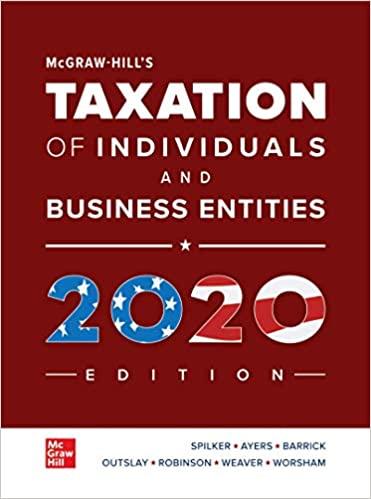61. Cool Touch Cookware (CTC) has been in business for about 10 years now. Daisy and Kesha...
Question:
61. Cool Touch Cookware (CTC) has been in business for about 10 years now. Daisy and Kesha are each 50 percent owners of the business. They initially established the business with cash contributions. CTC manufactures unique cookware that remains cool to the touch when in use. CTC has been fairly profitable over the years. Daisy and Kesha have both been actively involved in managing the business. They have developed very good personal relationships with many customers (both wholesale and retail)
that, Daisy and Kesha believe, keep the customers coming back.
On September 30 of the current year, CTC had all of its assets appraised. Below is CTC’s balance sheet, as of September 30, with the corresponding appraisals of the fair market value of all of its assets. Note that CTC has several depreciated assets. CTC uses the hybrid method of accounting. It accounts for its gross margin-related items under the accrual method and it accounts for everything else using the cash method of accounting.
Assets Adjusted Tax Basis FMV Cash $150,000 $150,000 Accounts receivable 20,000 15,000 Inventory* 90,000 300,000 Equipment 120,000 100,000 Investment in XYZ stock 40,000 120,000 Land (used in the business) 80,000 70,000 Building 200,000 180,000 Total assets $700,000 $935,000†
Liabilities Accounts payable $ 40,000 Bank loan 60,000 Mortgage on building 100,000 Equity 500,000 Total liabilities and equity $ 700,000 *CTC uses the LIFO method for determining the adjusted basis of its inventory. Its basis in the inventory under the FIFO method would have been $110,000. †In addition, Daisy and Kesha had the entire business appraised at $1,135,000, which is $200,000 more than the value of the identifiable assets.
From January 1 of the current year through September 30, CTC reported the following income:
Ordinary business income $530,000 Dividends from XYZ stock 12,000 Long-term capital losses 15,000 Interest income 3,000 Daisy and Kesha are considering changing the business form of CTC.
Required:
Assume CTC is organized as a C corporation. Identify significant tax and nontax issues associated with converting CTC from a C corporation to an S corporation. [Hint: See IRC §1374 and §1363(d).]
b)
Assume CTC is organized as a C corporation. Identify significant tax and nontax issues associated with converting CTC from a C corporation to an LLC. Assume CTC converts to an LLC (taxed as a partnership) by distributing its assets to its shareholders, who then contribute the assets to a new LLC. [Hint: See IRC §§331, 336, and 721(a).]
c) Assume that CTC is a C corporation with a net operating loss carryforward as of the beginning of the year in the amount of $2,000,000. Identify significant tax and nontax issues associated with converting CTC from a C corporation to an LLC (taxed as a partnership). Assume CTC converts to an LLC by distributing its assets to its shareholders, who then contribute the assets to a new LLC. [Hint: See IRC §§172(a), 331, 336, and 721(a).]
Step by Step Answer:

Taxation Of Individuals And Business Entities 2020
ISBN: 9781259969614
11th Edition
Authors: Brian Spilker, Benjamin Ayers, John Robinson, Edmund Outslay, Ronald Worsham, John Barrick, Connie Weaver





